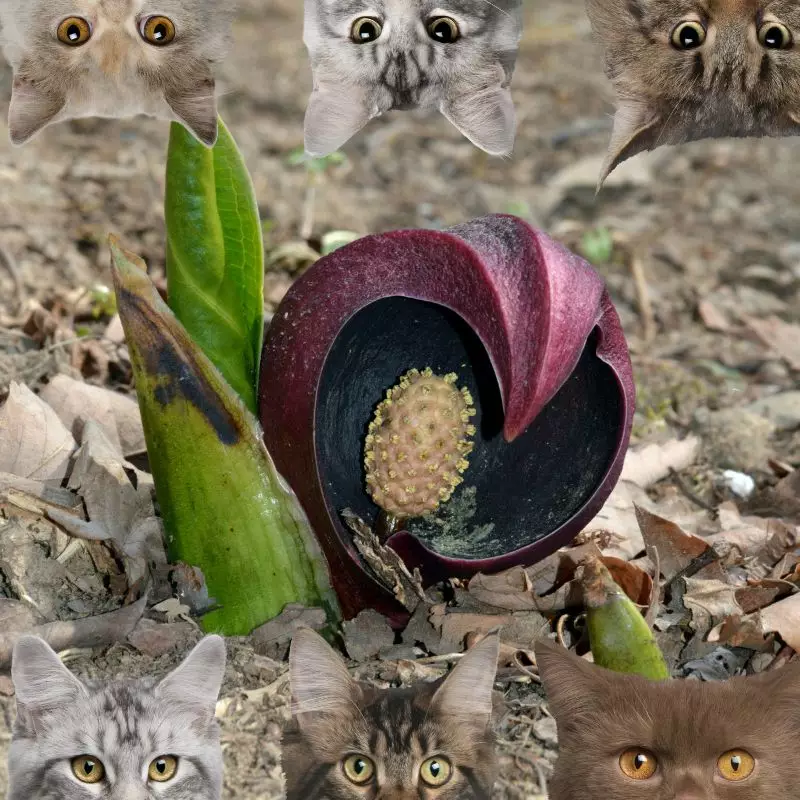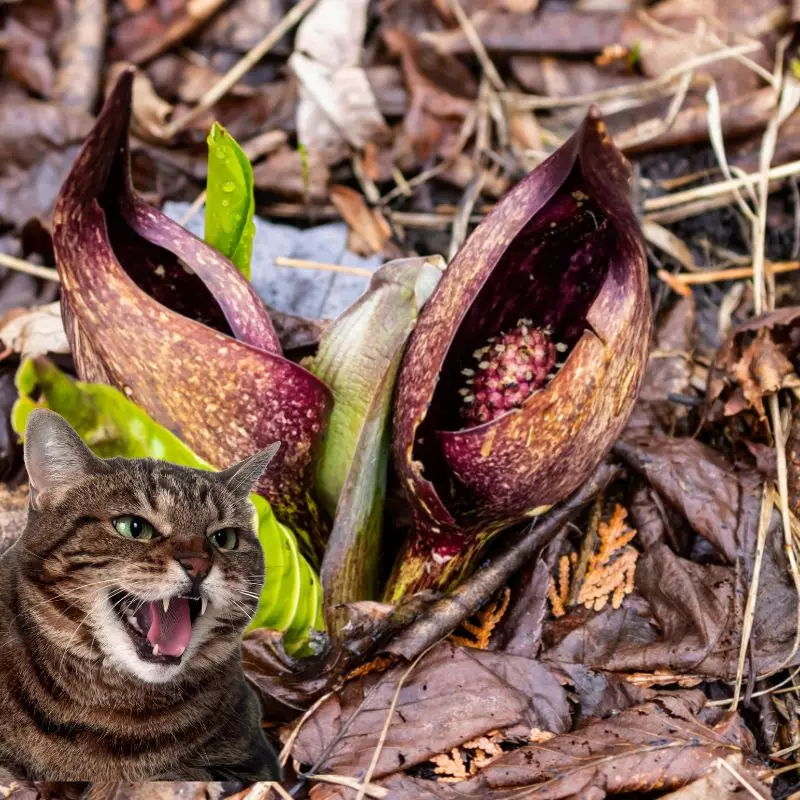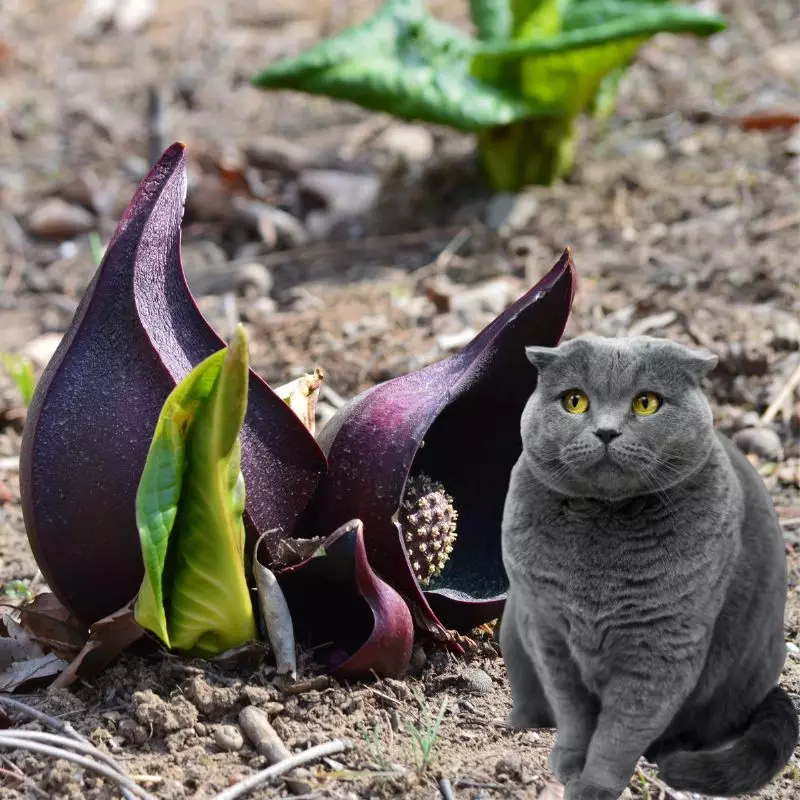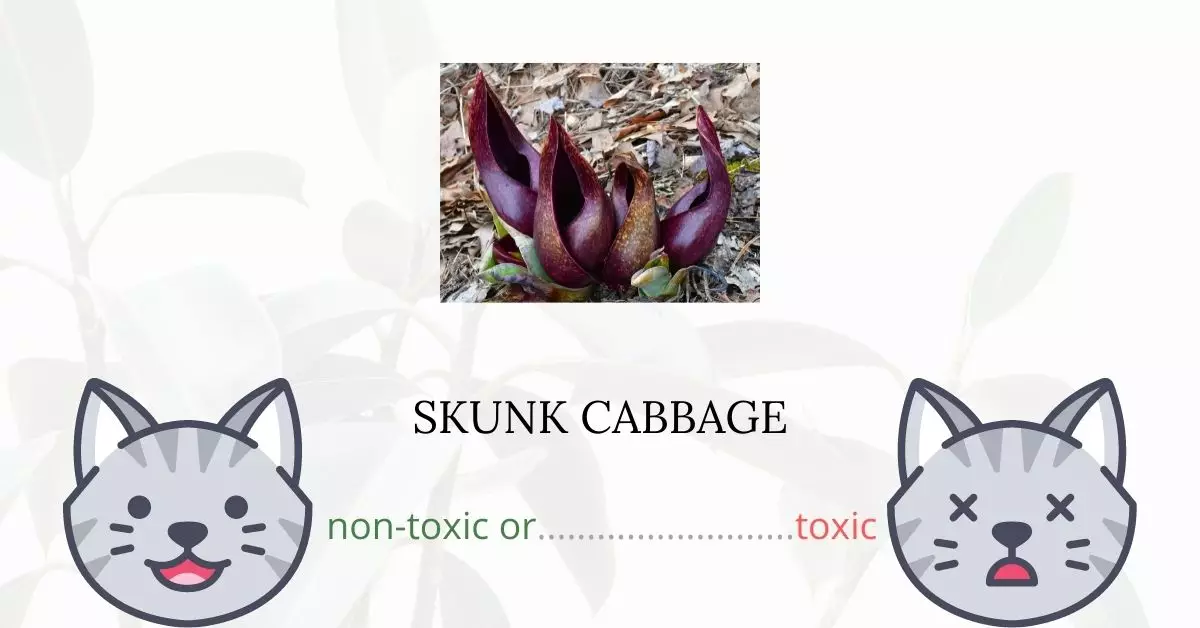Skunk Cabbage is indeed toxic to cats, posing serious risks when ingested, even in smaller amounts.
This article has been meticulously developed in partnership with a team of esteemed Doctors of Veterinary Medicine (DVMs) who have contributed their extensive knowledge and expertise to offer precise and current information concerning the dangers skunk cabbage presents to cats, along with the effects it can incur. Furthermore, to guarantee the reliability and accuracy of our information, we have also conducted comprehensive research on authoritative websites such as ASPCA and PetMD regarding skunk cabbage and other related plants.
Skunk cabbage, and other plants in the Araceae family, harbor insoluble calcium oxalate crystals which can induce symptoms like mouth burning, swelling, and a choking sensation, even when ingested in minimal quantities or as few as two small bites. In some cases, consuming large quantities of the leaves can prove fatal. Although some species’ leaves might contain lesser or no poison, it is prudent to consider all parts of these plants hazardous. It is vital to avoid any contact between cats and skunk cabbage, given the potential severity of reactions and complications.
Within these plants, idoblasts—specialized cells—are found. These cells, present in various plant species, both poisonous and non-poisonous, hold substances such as oil, latex, gum, resin, tannin, pigments, or minerals. Raphides are bundles of needle-like calcium oxalate crystals that are contained within these cells, dull on one end and sharp on the other, bound together by a gelatinous material rich in free oxalic acid. When a cat chews or bites into the plant, it can release these crystals, causing immediate pain and irritation.
Clinical Signs of Skunk Cabbage Poisoning in Cats

When a cat comes into contact with, or consumes, the skunk cabbage plant, several clinical signs can manifest due to the insoluble calcium oxalate crystals present in the plant. These crystals cause immediate pain and inflammation and can induce various symptoms.
1. Intense Burning Sensation:
Upon intake, cats will experience an intense burning sensation in the mouth, throat, lips, and tongue almost immediately. This burning is caused by the needle-like calcium oxalate crystals piercing the soft tissues, releasing oxalic acid, and inducing a painful, burning sensation.
2. Excessive Drooling:
The burning and irritation from the oxalate crystals stimulate the salivary glands, leading to excessive drooling as the body’s response to soothe and wash away the irritants.
3. Throat Choking and Swelling:
The crystals and oxalic acid can cause significant inflammation and swelling in the throat, leading to a choking sensation. This swelling can obstruct the airway, posing a serious risk of suffocation.
4. Difficulty Swallowing (Dysphagia):
The inflammation and swelling also impact the ability to swallow, causing discomfort and reluctance in cats to ingest food or water.
These symptoms can persist for up to two weeks after intake, even after initial exposure to small amounts. However, if a cat has ingested larger quantities of skunk cabbage, the following severe symptoms may also occur:
5. Severe Digestive Upset:
The irritants can continue to affect the gastrointestinal tract, leading to severe digestive disturbances, including vomiting and diarrhea, as the body attempts to expel the toxins.
6. Extreme Difficulty Breathing:
As the swelling progresses, it may cause extreme difficulty in breathing. The inflamed throat can constrict the airway, resulting in rapid, shallow gasps or dyspnea, which is a medical emergency requiring immediate veterinary attention.
All these clinical signs necessitate prompt veterinary intervention to manage the symptoms and prevent further complications, especially when large quantities of the plant have been ingested. Careful observation and early detection of these symptoms are crucial for ensuring the well-being of cats exposed to skunk cabbage.
First Aid and Treatment of Skunk Cabbage Poisoning in Cats

Treatment for calcium oxalate ingestion can usually be done at home. If your cat has consumed a plant that contains calcium oxalate, the mouth should be thoroughly cleaned and cleansed with water. The animal can then be fed yogurt, milk, cheese, or any other calcium-rich food to help relieve the pain by precipitating some calcium oxalate crystals. Most cats will recover completely within 12 to 24 hours of ingestion.
When a cat has more severe gastrointestinal upset, such as chronic vomiting and diarrhea, it should be closely examined for signs of dehydration and given fluid therapy if necessary.
Recovery from Skunk Cabbage Poisoning in Cats

Sucralfate is administered to cats weighing more than 0.25g every 8 to 12 hours to relieve stomach and intestinal irritation. Your cat should be kept under observation at a veterinarian’s practice if the airway becomes closed due to swelling until the swelling subsides and the animal is breathing normally. Consult a veterinarian to avoid further intake of the herb.
Prevention of Skunk Cabbage Poisoning in Cats
Skunk cabbage should not be grown in the yard by cat owners. Allow no interaction between your cat and this species if you have one in your yard.
If you love plants but have cats at home, check out these lists:





